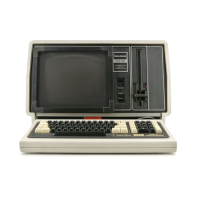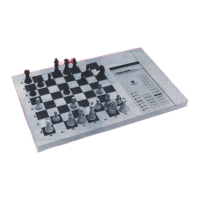OPERATION
Output
to the Quick
Printer II
The simplest
way to drive the
Quick
Printer
II
is with LEVEL II
BASIC LPRINT
and LLIST statements.
See the LEVEL II BASIC
Reference
Manual for details.
The Quick
Printer
II doesn't print
each
character as it is received
-
it
waits until it
has
received an
entire line
and then prints. That's
why
it's
called
a
line
printer
instead of a
character-printer.
Each
line can
contain up
to
32 characters.
(There's also a
16-character/line mode,
described
later
under Special
Features.)
If
the
line you
are
printing exceeds 32
characters, the Quick Printer
II will automatically
wrap-around to
the
next
line,
so
no data will be
lost.
Note:
While
entering and running
programs
which output to the
Quick Printer
II,
it
wi
ll help
to put the Video
Display
in
the
32-
character/line mode
(
EGIHi
B)-
That way,
the
lines
you
see
on
the
Display
correspond to what will be
LPRINTed or
LLISTed.
Special
Features
Double-Size Mode
(16-characters/line)
For
special effects
like titling pages, printing headings, etc.,
you can
switch the
Printer to
a
double-size
mode.
In this
mode, each line can
contain up to 16
characters.
To
switch to the
double-size mode
using LEVEL
II
BASIC, simply
include
CHR$(15) as the
first item in your LPRINT list. For
example:
it)
LrKifll
u-f.ii.ki/
rnl
LtHtKo
will produce the
following printout:
FAT LETTERS
Note: This
will only
work if the Printer's holding buffer has been
cleared
by
execution of a carriage return. If
the buffer
already
contains some
data, the CHR$(15)
will
be
ignored.
If you have
LPRINTed something
with
a
trailing
comma
or semi-
colon, the buffer won't
be printed until it is
filled.
In such
a
case
LPRINT CHR$( 1
5)
may
not put the code at
the
beginning of
the
buffer. It will
always be first if you precede
it with
an
LPRINT
"
"
statement.
More later . .
.)
When the Printer
finishes
printing the double-size
line,
it automatically
switches back to the
32-character
mode so it
will be ready
to
print
a
regular
32-character
line.
Later on, we'll
show you
how to print long
messages in
the double-size mode.
11

